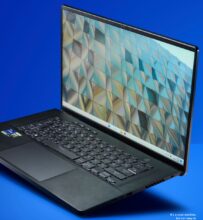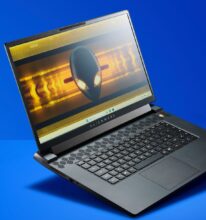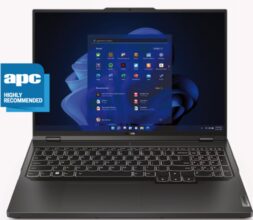MSI GS63VR Stealth Pro-078 –
Performance to go of all the laptops we’ve tested, MSI’s GS63VR Stealth Pro is one of our favorites. We’ve long been searching for a gaming laptop that offers solid 1080p performance in a frame that’s not just portable, but is actually light and thin enough to toss in a regular backpack for gaming on the go. The kind of machine that a college student could take to class, or a young professional into a meeting—and not have to worry about loud whirring fans disturbing their colleagues. In short, a MacBook Pro that can play games.
Table of Contents
[sc name=”ad 2″]
The GS63VR comes pretty close to fulfilling that dream. With an Intel Core i7- 7700HQ CPU, 16GB DDR4-2400 RAM, and a 256GB SSD, the GS63VR is nearly identical to (if not a small step up from) the 15- inch Apple prodigy on productivity specs, while its GeForce GTX 1070 absolutely demolishes the Mac’s Radeon Pro 555 GPU—all while costing less.
Of course, Apple products have never been known for their frugality. It’s the intangibles—design, build quality, and ease of use—that make its products appealing to pretty much everyone who doesn’t want to play games. But with the MSI GS63VR, we might have finally found a competitor.
The black aluminum chassis and screen hinges feel solid to the touch, with an elegant, understated design—by gaming laptop standards, at least. The SteelSeries keyboard offers full RGB backlighting, but more importantly, feels great to type on. Similarly, the touchpad is one of the best we’ve used on a Windows machine. And while MacBooks still reign supreme in the battery life category, we were able to get a modest three hours and eight minutes out of the GS63VR—enough time for back-to- back meetings or a very lengthy movie.
The GS63VR does all this in a frame that weighs in at just shy of four pounds, and measures only 0.69 inches thick—nearly identical to the 15-inch MacBook Pro. But unlike the MBP, it can also play games.
In our gaming tests, the GS63VR pulled in an average of 71 fps across Rise of the Tomb Raider’s three-part benchmark, scoring 95 fps in the Mountain Pass, 61 in Syria, and 56 in the Geothermal Valley. Total War: Warhammer II’s Battle benchmark returned 55fps, while the demanding Tom Clancy’s Ghost Recon: Wildlands came back at 43fps—all at 1080p using the highest available graphics preset. Performance-wise, this puts the GS63VR and its Max-Q-tuned GTX 1070 on par with a “regular” GTX 1060, as in Asus’s ROG Strix GL502VM or Acer’s Predator Helios 300.
This is the one area where the GS63VR disappoints us. We knew there would be a performance trade-off that came along with the Max-Q design—after all, light and thin is essentially the antithesis to high- performance. The Max-Q GTX 1080 that we tested in Asus’s ROG Zephyrus didn’t perfectly match a desktop-class GTX 1080, but it still outperformed the next card down: a desktop-class GTX 1070. By that logic, we knew a Max-Q GTX 1070 probably wouldn’t keep pace with a desktop 1070, but we were hoping it would still be a moderate step up from the GTX 1060.
It seems that isn’t the case—so, why should you pay over more for a Max-Q GTX 1070 than a regular GTX 1060-powered laptop? We already talked about size and weight. The other key factor is noise. Every GTX 1060-powered laptop we’ve tested sounds like a jet taking off as soon as the fans spin up. Not here—the GS63VR Stealth Pro lives up to its name. You just won’t hear this jet coming. -bo moore
MSI GS63VR Stealth Pro-078
- Light and thin; full-color RGB keyboard
- 120Hz screen
- quiet
- Lack of G-Sync
- low performance compared to desktop GTX 1070
- hot bottom
BENCHMARKS
| Cinebench R15 Single (Index) | 155 | 155 (0%) |
| Cinebench R15 Multi (Index) | 743 | 766 (0%) |
| CrystalDiskMark QD32 Sequential Read (MB/s) | 563 | 556 (-2%) |
| CrystalDiskMark QD32 Sequential Write (MB/s) | 133 | 516 (287%) |
| PCMark 10 Express (Index) | 3.852 | 6.086 (6%) |
| 3DMark: Fire Strike (Index) | 13.202 | 11.338 (-16%) |
| Rise of the Tomb Raider (fps) | 99 | 71 (-28%) |
| Total War: Warhammer 11 (fps) | 62 | 55 (-11%) |
| Tom Clancy’s Ghost Recon: Wildlands (Avg fps) | 68 | 63 (-10%) |
Our laptop zero-point is the Asus GL502VM-DS76, with an Intel Core i7-7700 HQ, an 8GB GTX 1070, and 16GB of DDR6-2600. All game tests are performed at 1080p at the highest graphical profile.
| SPECIFICATIONS | |
| Processor | Intel Core i7-7700HQ @ 2.8GHz |
| Graphics | GeForce GTX 1070 Max-Q |
| RAM | 16GB DDR4-2400 |
| Screen | 15.6-inch 1080p 120Hz wide view angle |
| Primary Storage | 256GB M.2 SATA SSD |
| Secondary Storage | 1TB 5.600rpm HDD |
| Keyboard | SteelSeries RGB |
| Cooling Solution | Copper CPU heatsink |
| Battery | 3-cell 57Whr |
| PSU | 180W |
| Weight | 3.96lb |
We love the GS63VR’s 120Hz screen, but wish it came with G-Sync.




